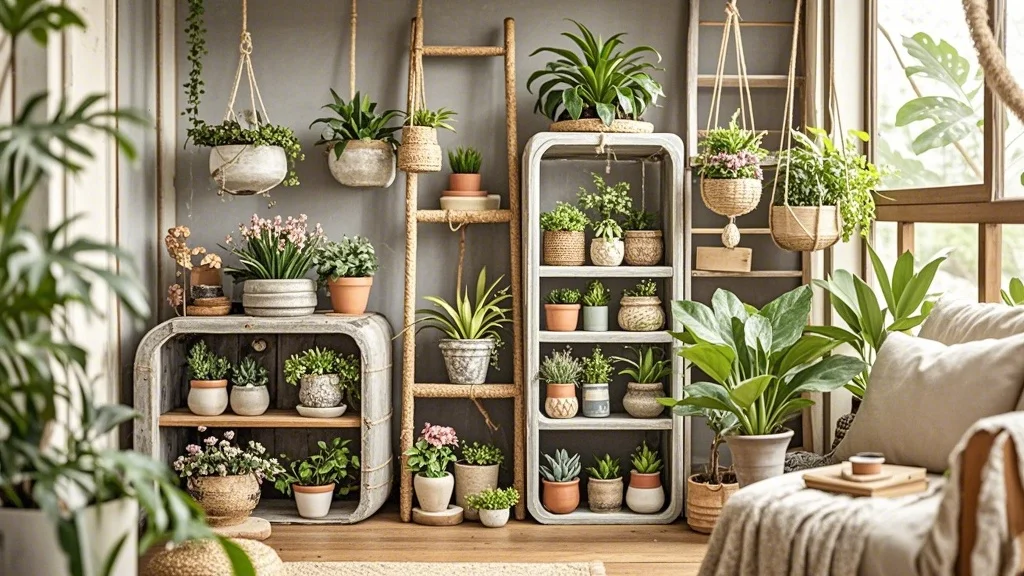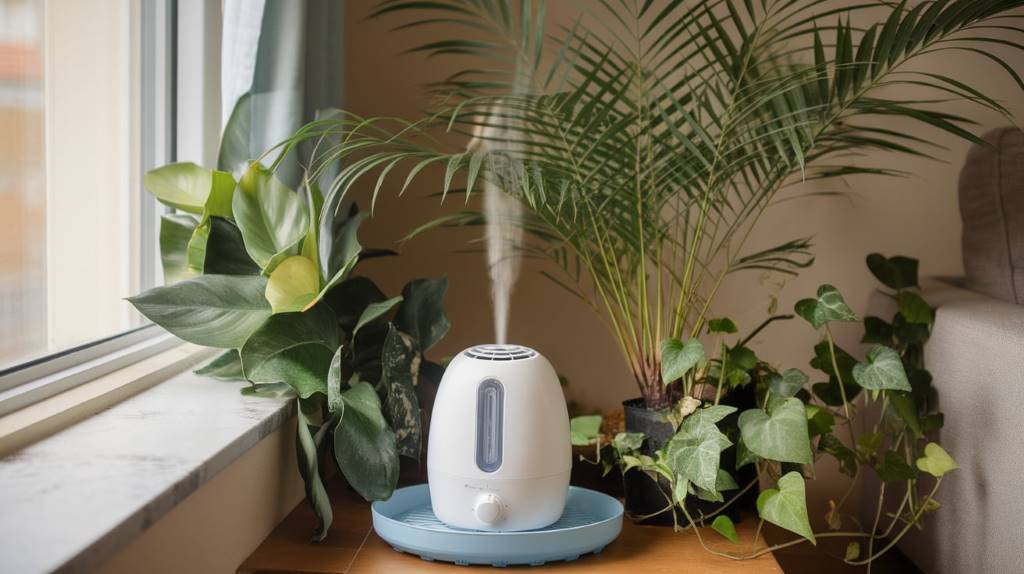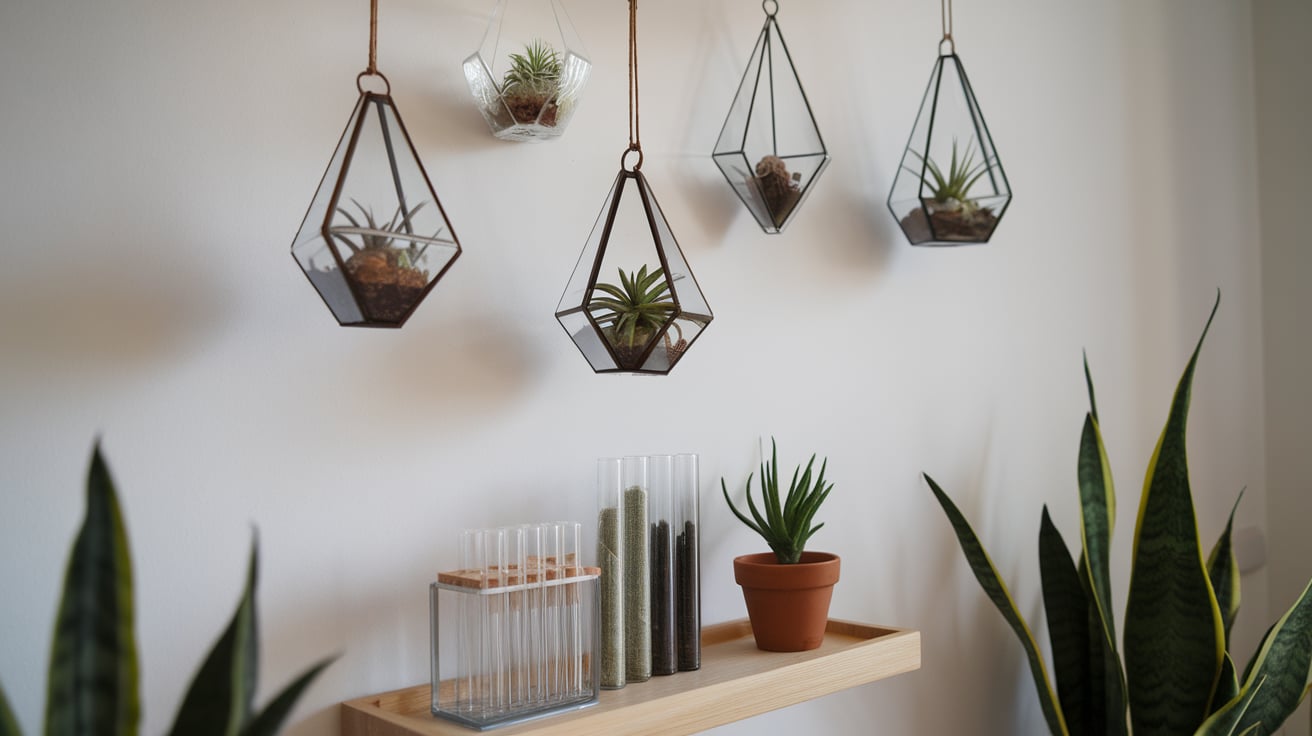For urban dwellers who love both plants and pets, creating a harmonious living space can be challenging. This guide will help you design pet-safe plant arrangements that protect your furry friends from potential toxins while safeguarding your green companions from curious paws and nibbling teeth.
Contents
Understanding the Risks
Common Houseplants Toxic to Pets
Before diving into arrangement strategies, it’s crucial to know which plants pose risks to pets:
- Lilies (extremely toxic to cats)
- Aloe vera
- Pothos
- Snake plant
- Philodendron
- Monstera
- Peace lily
Always research plants before bringing them home and consult with a veterinarian if you’re unsure.
Pet Behaviors to Watch For
- Digging in soil
- Chewing on leaves or stems
- Knocking over pots
- Marking territory
Choosing Pet-Safe Plants
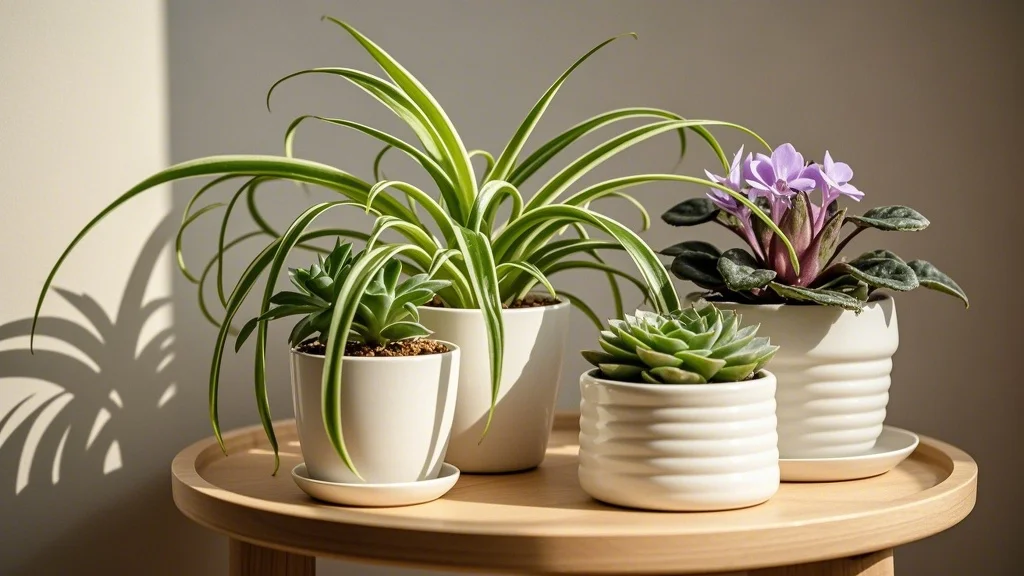
Best Non-Toxic Options for Small Spaces
- Spider plant
- Boston fern
- Parlor palm
- African violet
- Echeveria succulents
- Haworthia
- Peperomia
- Air plants
These plants are not only safe for pets but also well-suited for compact living areas.
Design Strategies for Pet-Friendly Plant Displays
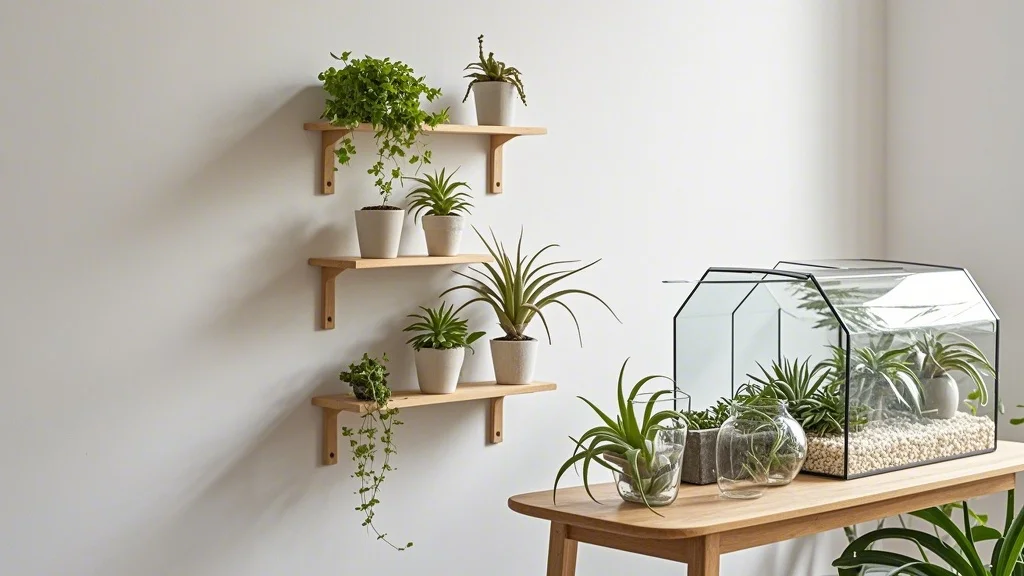
Elevated Arrangements
-
Floating Shelves
- Install sturdy floating shelves out of pet reach
- Ensure proper weight distribution
- Use non-slip mats to prevent pots from sliding
-
Hanging Planters
- Macramé hangers for a boho look
- Glass terrariums for air plants
- Ensure hooks are securely fastened to ceiling joists
-
Vertical Gardens
- Wall-mounted planters
- Pocket planters for herbs
- Living walls with built-in irrigation systems
Ground-Level Protection
-
Terrarium Displays
- Closed terrariums for humidity-loving plants
- Open terrariums with pebble barriers
- Use heavy, stable containers to prevent tipping
-
Raised Plant Stands
- Multi-tiered plant stands
- Adjustable height options
- Wide bases for stability
-
Enclosed Plant Cabinets
- Repurposed glass cabinets
- Custom-built plant display cases
- Ensure proper ventilation and lighting
Pet Deterrent Techniques
Natural Deterrents
-
Citrus Peels
- Place orange or lemon peels around plant bases
- Refresh regularly as scent fades
-
Herb Barriers
- Plant pet-safe herbs like rosemary or thyme around vulnerable plants
- Creates a natural, aromatic boundary
-
Vinegar Spray
- Mix equal parts water and white vinegar
- Spray around plant area (not on plants)
- Reapply after watering or rain
Physical Barriers
-
Decorative Pebbles
- Cover soil with large, smooth river rocks
- Prevents digging and adds aesthetic appeal
-
Plant Cages
- Wire cages or decorative fencing around plants
- Ensure openings are small enough to deter pets
-
Sticky Tape
- Place double-sided tape around pot edges
- Deters cats from jumping or climbing
Optimizing Small Spaces for Plants and Pets
Multi-Functional Furniture
-
Plant Stand/Cat Tree Combo
- Integrate climbing structures with plant displays
- Provides enrichment for cats while protecting plants
-
Window Perches with Plant Shelves
- Install cat perches with adjacent plant shelves
- Gives pets a view while keeping plants separate
-
Bookshelf Plant Displays
- Dedicate upper shelves to plants
- Lower shelves for pet beds or toys
Clever Room Dividers
-
Plant Wall Dividers
- Use tall plant stands as room separators
- Creates distinct pet and plant zones
-
Hanging Plant Curtains
- Suspend multiple hanging plants to form a living curtain
- Defines spaces while allowing light through
-
Terrarium Tables
- Coffee tables with built-in terrariums
- Provides a safe display area at pet level
Maintenance and Care
Regular Plant Check-ups
-
Inspect for Damage
- Look for chew marks or broken stems
- Trim damaged parts promptly
-
Soil Maintenance
- Remove any pet waste immediately
- Top up soil as needed to prevent exposure
-
Pest Control
- Use pet-safe pest management methods
- Neem oil or insecticidal soaps in moderation
Pet-Safe Cleaning Practices
-
Non-Toxic Plant Cleaners
- Use diluted castile soap for leaf cleaning
- Avoid chemical leaf shiners
-
Safe Watering Methods
- Water plants when pets are in another room
- Clean up any spills promptly
-
Air Purification
- Consider air-purifying plants like spider plants
- Use HEPA filters to reduce airborne irritants
Educational Approaches
Training Your Pets
-
Positive Reinforcement
- Reward pets for ignoring plants
- Provide alternative toys and scratching posts
-
Consistent Commands
- Use firm, clear commands like “leave it”
- Apply consistently across all household members
-
Supervised Exploration
- Allow pets to safely investigate plants under watch
- Redirect interest to appropriate activities
Creating Pet-Friendly Plant Zones
-
Designated Pet Gardens
- Set up a small area with pet-safe grasses
- Encourages natural grazing behaviors safely
-
Interactive Plant Toys
- Catnip plants in secure containers
- Dog-safe chew toys shaped like plants
-
Sensory Gardens
- Plant pet-safe herbs for olfactory stimulation
- Include different textures for tactile exploration
Troubleshooting Common Issues
Dealing with Persistent Chewers
-
Bitter Apple Spray
- Apply pet-safe bitter sprays to plant leaves
- Test on a small area first to ensure plant safety
-
Aluminum Foil Barriers
- Wrap pot bases in foil to deter scratching
- Creates an unpleasant texture for pets
-
Motion-Activated Deterrents
- Use harmless air puffs or noise makers
- Startles pets without causing harm
Addressing Soil Diggers
-
Mulch Layers
- Add a layer of decorative mulch over soil
- Choose large pieces that are difficult to ingest
-
Chicken Wire Covers
- Cut chicken wire to fit pot tops
- Allows water through while preventing digging
-
Automatic Plant Waterers
- Reduces the need for exposed, moist soil
- Helps maintain consistent soil moisture
Seasonal Considerations
Indoor Gardening Through the Seasons
-
Winter Protection
- Move plants away from cold drafts
- Use grow lights to supplement reduced sunlight
-
Summer Ventilation
- Ensure good air circulation to prevent mold
- Use fans to deter flying insects
-
Holiday Precautions
- Keep festive plants like poinsettias out of reach
- Be cautious with gift plants from well-meaning visitors
Conclusion
Creating a pet-safe plant paradise in a small space requires creativity, planning, and ongoing maintenance. By choosing the right plants, implementing smart design strategies, and consistently training your pets, you can enjoy the best of both worlds. Remember, the key to success is balance – meeting the needs of your plants while ensuring the safety and comfort of your beloved pets. With these strategies in place, your compact urban oasis can flourish, providing a harmonious environment for all its inhabitants, whether they have leaves or paws.

